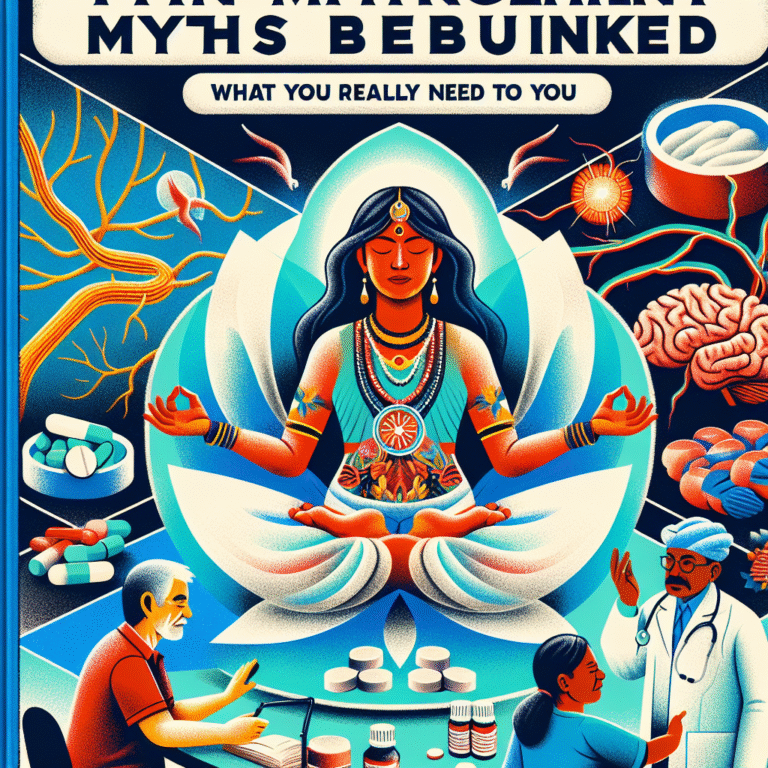
Introduction
Have you ever felt trapped in a never-ending loop of negative thoughts? You’re not alone. Research shows that approximately 20% of adults experience mental health issues at some point in their lives—many stemming from persistent negative thought patterns. Whether it’s anxiety, depression, or stress, negative thinking can overshadow even the most brilliant of minds. What if I told you that there’s a proven method to break this cycle? Enter Cognitive Behavioral Therapy (CBT), a revolutionary approach that has transformed countless lives. In this comprehensive guide, we will explore Breaking the Cycle: How CBT Transforms Negative Thought Patterns and empower you with actionable insights to reclaim your mental well-being.
What is Cognitive Behavioral Therapy?
Cognitive Behavioral Therapy is a structured, time-limited psychotherapy that focuses on the connections between thoughts, feelings, and behaviors. Developed in the 1960s by Dr. Aaron Beck, CBT is rooted in the idea that our thoughts influence our feelings, which in turn affect our behaviors. For instance, if you think, "I always fail," you are likely to feel discouraged, leading to actions that confirm your negative thinking.
Key Principles of CBT
- Thought Awareness: Identify and recognize negative thought patterns.
- Challenge Negative Thoughts: Evaluate the truthfulness of those thoughts.
- Behavior Modification: Implement healthier behaviors based on new, realistic thinking.
Breaking the Cycle: Understanding Negative Thought Patterns
Negative thought patterns can manifest in various forms, often leading to emotional distress and negative behaviors. Here are some common patterns:
- All-or-Nothing Thinking: Viewing situations in black and white, without shades of gray.
- Overgeneralization: Making sweeping conclusions based on a single event.
- Catastrophizing: Expecting the worst possible outcome in any given situation.
Understanding these patterns is the first step in breaking the cycle. Cognitive Behavioral Therapy equips individuals with tools to identify these detrimental thoughts and replace them with more constructive ones.
Case Study: Sarah’s Journey
Sarah, a 28-year-old teacher, constantly thought, "I’m not good enough," which caused her anxiety and avoidance of social situations. Through CBT, she learned to recognize her all-or-nothing thinking. After weeks of therapy, she restructured her thoughts, slowly transforming her self-perception. By breaking the cycle, Sarah not only improved her social interactions but also thrived in her professional life.
Core Techniques Used in CBT
Cognitive Behavioral Therapy employs several techniques designed to assist individuals in transforming negative thought patterns:
1. Cognitive Restructuring
This technique involves challenging and changing unhelpful thoughts. Clients learn to ask questions that help them assess the accuracy of their beliefs.
2. Behavioral Activation
This focuses on encouraging individuals to engage in activities that bring joy and fulfillment, countering negative feelings and thoughts.
3. Mindfulness
Incorporating mindfulness helps individuals stay present and less overwhelmed, reducing the likelihood of negative thoughts spiraling out of control.
Chart: Common Techniques in CBT
| Technique | Description | Purpose |
|---|---|---|
| Cognitive Restructuring | Challenging negative beliefs | Foster a positive self-assessment |
| Behavioral Activation | Engaging in pleasurable activities | Counteract feelings of sadness |
| Mindfulness | Staying present | Reduce anxiety and negative thinking |
How CBT Transforms Lives: Real-World Applications
Cognitive Behavioral Therapy is not just theoretical; it has been employed across various settings to achieve significant results. Let’s delve into some specific applications.
Case Study: Michael’s Anxiety
Michael, a 34-year-old engineer, struggled with chronic anxiety that exacerbated at work. Feeling overwhelmed by pressures, he often thought, "If I make a mistake, I’ll lose my job." Through CBT, Michael learned to challenge these catastrophic thoughts and practice progressive relaxation techniques, ultimately fostering resilience and improving his job performance.
The Impact of CBT on Depression
Numerous studies have indicated that CBT can be as effective as medication in treating moderate to severe depression. For instance, a meta-analysis of multiple studies concluded that individuals undergoing CBT showed significant improvement in depressive symptoms, suggesting that breaking the cycle is key to mental health recovery.
FAQs About Cognitive Behavioral Therapy
1. How long does CBT take to show results?
CBT is generally a short-term therapy, often requiring only 5 to 20 sessions. Some individuals report improvements within weeks.
2. Is CBT suitable for everyone?
While CBT is effective for many, those with more severe psychological conditions may benefit from a combination of therapies. Consulting a mental health professional can provide tailored guidance.
3. Can I practice CBT on my own?
Self-help resources and guided books exist, but working with a trained therapist typically yields more significant results.
4. Is CBT only for anxiety and depression?
No, CBT can address various conditions like PTSD, phobias, and eating disorders, essentially transforming various negative thought patterns.
5. How can I find a qualified CBT therapist?
Seek recommendations or consult your healthcare provider. Also, reviewing credentials and asking questions about their experience with CBT is a good idea.
Action Steps: Implementing CBT Techniques in Your Life
Transforming your thought patterns is undoubtedly a journey of self-discovery and hard work. Here are some actionable steps to start breaking the cycle today:
-
Journaling: Keep a daily log of your thoughts and feelings. This will help you identify negative patterns.
-
Practice Mindfulness: Engage in mindfulness exercises to strengthen your awareness of the present moment.
-
Set Realistic Goals: Identify small, achievable objectives. Celebrate your victories, no matter how minor they may seem.
-
Reach Out for Support: Engaging with a therapist or support group can provide guidance and encouragement.
- Stay Consistent: Like any skill, changing negative thought patterns takes time. Be patient with yourself and persist in your efforts.
Conclusion
Breaking the Cycle: How CBT Transforms Negative Thought Patterns is not merely a statement; it is an achievable reality for many. Through its structured approach, CBT empowers individuals to reclaim control over their thoughts and emotions. Whether you’re dealing with anxiety, depression, or simply aiming for personal growth, the principles of CBT offer a roadmap to mental resilience.
As you move forward, remember that the journey to breaking the cycle is unique for everyone. With commitment, self-compassion, and the right tools, you can uncover the bright moments life has to offer. Your mind is a powerful tool—use it wisely!
Inspiring Takeaway: Remember, the first step toward transforming your life is recognizing the power of your thoughts. You have the ability, through CBT and personal commitment, to reshape your mind and reclaim your happiness. Start today—take the first step toward your brighter future.














